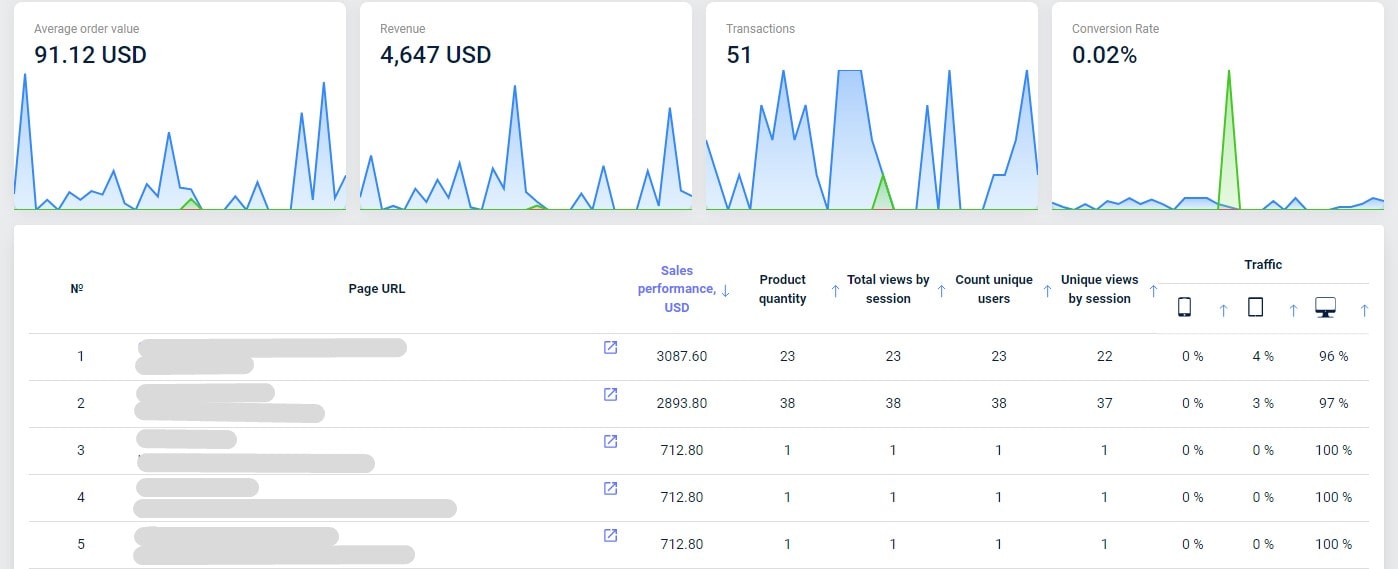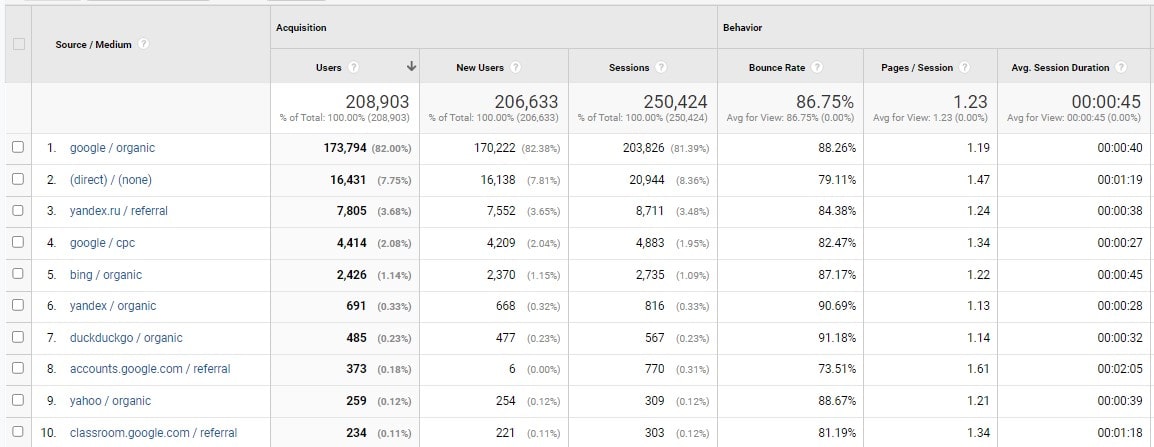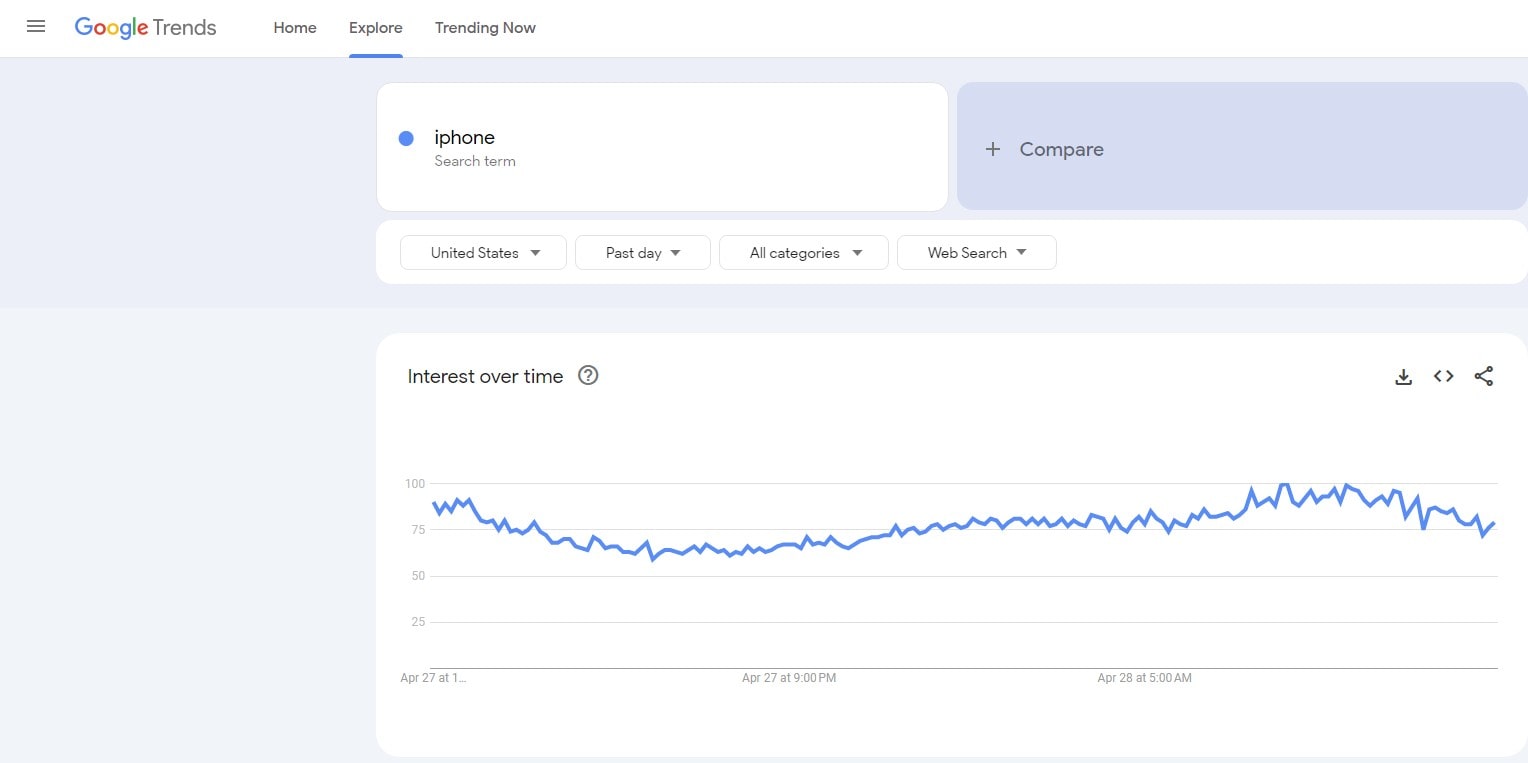Welcome to the exciting world of digital marketing analytics! ⚡ Businesses must use analytics to improve their marketing strategies and stay ahead in today’s fast-changing digital world. Digital marketing analytics encompasses many tasks and goals to drive growth and boost ROI.
Key objectives include:
- Unearthing valuable insights from customer data
- Assessing the performance of various marketing channels
- Optimizing website design and content to enhance user experience
- Streamlining advertising campaigns
For a real-life example, consider using Plerdy’s Conversion Rate (CR) analysis to optimize your website’s performance. This powerful tool offers businesses a treasure trove of data, helping them identify areas of improvement and implement targeted adjustments. By incorporating Plerdy’s CR analysis, companies can significantly elevate their digital marketing analytics game.

In a nutshell, digital marketing analytics is an indispensable asset for businesses navigating the online arena. Organizations can make informed decisions that propel them toward digital success by keeping a keen eye on key metrics and employing top-notch tools. So, buckle up and get ready to dive deep into the fascinating realm of digital marketing analytics!
What Is Digital Marketing Analytics?
Digital marketing analytics, an indispensable facet of modern business, empowers organizations to glean invaluable insights from a wealth of data. By scrutinizing online user behavior, companies can fine-tune their marketing strategies.
Harnessing the power of digital marketing analytics enables businesses to:
- Identify trends and patterns in customer behavior
- Pinpoint areas of improvement for website design and content
- Evaluate the efficacy of promotional campaigns
- Forecast future marketing outcomes
For instance, consider a local boutique that’s venturing into e-commerce. By utilizing digital marketing analytics, they can evaluate the success of their social media promotions, identify high-converting landing pages, and make data-driven decisions to enhance user experience on their website.
To paint an even clearer picture, picture an online bookstore that wishes to expand its customer base. Through analytics, they can identify popular genres, detect emerging bestsellers, and tailor their promotional strategies to cater to their audience’s preferences, ultimately maximizing profits and customer satisfaction.
Digital marketing analytics gives firms the skills to maximize their online presence and create highly successful marketing plans to stay ahead of the competition. This data-driven approach can help businesses stand out in the digital world.
Why Is Digital Marketing Analytics Useful?

Digital marketing analytics is a compass that guides businesses through the ever-changing online landscape. It’s a crucial tool for any company that aims to stay ahead of the curve and make a lasting impact on its target audience.
The benefits of digital marketing analytics are manifold:
- Pinpointing high-performing marketing strategies
- Optimizing website design and content
- Unearthing valuable customer insights
- Fine-tuning advertising campaigns
- Enhancing overall user experience
Imagine a budding fitness app leveraging digital marketing analytics to gauge the effectiveness of its promotional efforts. The company can analyze user behavior and tailor future content accordingly by identifying which workout routines resonate with its audience. In doing so, the app boosts its subscriber count and fosters a loyal user base.
Similarly, a burgeoning online clothing retailer can harness the power of digital marketing analytics to examine traffic sources, track conversion rates, and allocate marketing budget efficiently. By staying in tune with customer preferences, the retailer can outpace competitors and enjoy a meteoric rise in the digital marketplace.
Digital Marketing Analytics Vs. Web Analytics

Digital marketing analytics and web analytics, often mistaken for interchangeable concepts, serve distinct purposes in online business. While both tools shed light on website performance, their focuses diverge, providing unique insights that cater to specific objectives.
The key differences between digital marketing analytics and web analytics include:
- Scope: Digital marketing analytics encompasses a holistic view of online marketing efforts, tracking the performance of various channels such as email, social media, and paid advertising. Web analytics, on the other hand, narrows its focus to website-specific data, such as traffic sources, bounce rates, and user behavior.
- Data Analysis: Digital marketing analytics strives to correlate marketing activities with business outcomes, enabling organizations to measure ROI and optimize their strategies. Web analytics primarily analyzes user engagement, providing insights that enhance website functionality and user experience.
- Decision-making: Digital marketing analytics informs marketing decisions and budget allocation, helping businesses identify lucrative channels and tailor their promotional efforts. Web analytics drives website design, content, and overall user experience improvements.
Digital marketing and web analytics form a dynamic duo, working in tandem to equip businesses with a comprehensive understanding of their online presence. By leveraging both tools, companies can fine-tune their strategies and pave the way to digital success.
Best Metrics For Website Marketing Analytics

Website marketing analytics, the driving force behind data-driven decision-making, hinges on monitoring key metrics to gauge performance and optimize strategies. By keeping a finger on the pulse of these crucial indicators, businesses can stay ahead of the curve and ensure their online endeavors yield fruitful results.
To navigate the digital landscape, it’s essential to track these key metrics:
- Traffic Sources: Identifying where website visitors originate helps businesses tailor their marketing efforts to high-performing channels and optimize ad spend.
- Conversion Rate: This key metric reveals the percentage of visitors who complete a desired action, such as purchasing or signing up for a newsletter.
- Bounce Rate: A high bounce rate may signal poor user experience or irrelevant content, prompting businesses to revamp their website design and content strategy.
- Average Time on Page: This metric sheds light on user engagement, guiding businesses to refine their content and capture their audience’s attention.
- Return Visitor Rate: A strong return visitor rate reflects brand loyalty, indicating that businesses successfully nurture customer relationships.
Consider an online furniture store striving to maximize its marketing efforts. By closely monitoring these metrics, the retailer can pinpoint high-converting traffic sources, optimize ad placements, and invest in content that keeps customers returning for more.
Website marketing analytics measurements help firms make informed decisions and improve their digital strategies.
List Of The Best 15 Tips for Digital Marketing Analytics
Regularly evaluating your digital marketing analytics arsenal is akin to fine-tuning a well-oiled machine, ensuring optimal performance and a competitive edge. By diligently scrutinizing their list of digital marketing analytics tools, businesses can identify emerging trends and adjust their online strategies accordingly. Embracing this approach enables organizations to stay in the vanguard of the digital marketing sphere, ultimately unlocking their website’s full potential and fostering growth.
1. Set Clear and Measurable Goals

Setting clear and measurable goals is crucial to successful marketing campaigns in today’s fast-paced digital landscape. Digital marketing analytics can greatly assist in achieving these objectives. Businesses can effectively gauge their progress and adjust strategies by establishing concrete targets and key performance indicators (KPIs).
To begin with, identify the primary objectives of your digital marketing efforts. This may include increasing brand awareness, generating leads, or driving sales. Once these goals are set, break them down into quantifiable KPIs allowing easy monitoring and analysis. Examples of KPIs include:
- Website Traffic
- Conversion rate
- Cost-per-click
- Social media engagement
A well-structured goal should be SMART: Specific, Measurable, Achievable, Relevant, and Time-bound. For instance, instead of aiming to “increase website traffic,” set a more specific goal like “achieve a 20% increase in website traffic within three months.” This approach allows for a focused and data-driven marketing strategy.
As you progress, utilize digital marketing analytics tools to track your KPIs and assess the effectiveness of your campaigns. This empowers businesses to identify strengths, weaknesses, and opportunities for optimization. Performance data analysis and data-driven decisions can maximize marketing results.
In summary, the foundation of any successful digital marketing campaign lies in setting clear and measurable goals. Using analytics to track progress and adjust strategies accordingly will ultimately lead to better outcomes and a competitive edge in the digital arena.
2. Choose the Right Analytics Tools

Choose the correct tools to simplify digital marketing analytics. With myriad options available, picking the tools that best align with your business goals, budget, and resources is essential.
To hit the ground running, consider the unique requirements of your organization – the size of your team, the channels you use, and the level of customization needed. Then, with this information, explore the market for analytics platforms that cater to your needs.
Some popular digital marketing analytics tools include:
- Plerdy
- Google Analytics 4
- Adobe Analytics
- Mixpanel
- Kissmetrics
- HubSpot
When weighing your options, don’t put all your eggs in one basket – diversify your toolkit to maximize the benefits. Opt for tools that offer comprehensive analytics across various channels, from social media to email marketing, while providing real-time data and valuable insights.
Finally, as your marketing strategy evolves, stay flexible and adaptable. Regularly assess the effectiveness of your chosen analytics tools and be open to trying new solutions as needed. By handpicking the right tools and staying in tune with industry advancements, you’ll set the stage for a data-driven, results-oriented digital marketing strategy that propels your business to success.
3. Integrate Data Sources

Data drives digital marketing. To stay ahead and make smart decisions, integrate data sources for a complete marketing performance picture. Combining information from multiple channels will give you valuable insights and uncover hidden patterns that drive results.
The first step in integrating data sources is identifying the channels contributing to your marketing efforts. These may include:
- Website analytics
- Social media platforms
- Email marketing campaigns
- Paid advertising
Once you’ve pinpointed the channels, select a platform that consolidates data from different sources, enabling seamless integration. These tools offer API connections, data imports, or built-in integrations with popular marketing platforms. This approach helps you paint a complete picture of your marketing landscape, breaking down data silos and fostering collaboration within your team.
You can easily connect the dots between campaigns, channels, and target audiences with integrated data. It allows you to optimize marketing strategies, allocate resources more efficiently, and deliver a consistent brand experience across all touchpoints.
4. Segment Your Data

To gain a deeper understanding of your audience and optimize your digital marketing efforts, it’s essential to segment your data. By dividing your audience into smaller, more manageable groups, you can tailor your marketing strategy to better resonate with specific segments, leading to increased engagement and conversion rates.
Data segmentation can be based on a variety of factors, such as:
- Demographics: age, gender, location
- Behavioral patterns: browsing habits, purchase history
- Channel preferences: social media, email, website
By drilling down into these categories, you’ll uncover insights that enable you to fine-tune your campaigns for maximum impact. For instance, if your analytics reveal that a particular age group is more interested in a specific product, you can create targeted promotions to cater to this segment’s preferences. This personalized approach not only boosts conversion rates but also fosters brand loyalty.
Utilizing digital marketing analytics to segment your data helps you stay in the driver’s seat, steering your marketing efforts in the right direction. As you dive deeper into audience insights, you’ll discover untapped growth opportunities and develop a more comprehensive understanding of your target market. Data segmentation is the secret sauce that elevates your digital marketing strategy, paving the way for continued success in an ever-changing landscape.
5. Benchmark Your Performance

In the competitive digital marketing landscape, it’s vital to benchmark your performance against industry standards and competitors. By comparing your results with those of your peers, you can identify areas of improvement, set realistic targets, and gauge the effectiveness of your marketing strategies.
Gather data on key performance indicators (KPIs) relevant to your business and industry to start benchmarking. These may include:
- Conversion rates
- Bounce rates
- Average session duration
- Cost per acquisition
Next, research industry benchmarks or analyze your top competitors to gain insights into the prevailing trends and best practices. This information will serve as a yardstick, enabling you to evaluate your performance and pinpoint areas where you may fall short.
As you identify gaps and opportunities, make data-driven decisions to refine your strategies and improve overall performance. By closely monitoring industry benchmarks, you can ensure that your digital marketing efforts are on par with or surpass your competitors.
6. Monitor Real-Time Metrics

In today’s fast-paced digital landscape, monitoring real-time metrics is crucial for staying agile and adapting your marketing strategy. You may spot patterns, optimize performance, and quickly make data-driven decisions by monitoring your campaigns to improve results. Real-time measurements reveal important digital marketing data, such as:
- Web traffic and user behavior
- Social media engagement
- Email marketing performance
- Ad campaign effectiveness
By tracking these metrics, you can spot opportunities and challenges as they arise, enabling you to fine-tune your strategy and capitalize on your marketing momentum. For example, if you notice a sudden spike in website traffic following a social media post, you can quickly adjust your content strategy to leverage this increased interest.
Moreover, monitoring real-time metrics allows you to identify and address issues before they escalate. For example, imagine noticing a sudden drop in conversion rates due to a technical glitch on your website – by catching this in real time, you can quickly rectify the problem and minimize potential losses.
In summary, keeping tabs on real-time metrics is an indispensable tactic for digital marketers seeking to stay ahead. By utilizing digital marketing analytics tools that provide real-time data, you can respond to emerging trends, troubleshoot issues, and optimize your marketing efforts, ensuring your campaigns continually pack a punch in the ever-evolving digital arena.
7. Conduct A/B Testing

A/B testing is a powerful technique in the digital marketer’s toolkit, allowing you to make data-driven decisions and optimize your campaigns. By comparing two web page versions, email, or advertisement, you can identify which option resonates better with your audience, resulting in higher engagement and conversion rates.
When conducting A/B testing, focus on key elements such as:
- Headlines and subject lines
- Call-to-action buttons
- Images and multimedia content
- Layout and design
To carry out a successful A/B test, start by selecting a single variable to test – for example, two different headlines for an email campaign. Next, split your audience into two random groups, ensuring each group receives one version of the tested element. Finally, monitor the results closely using digital marketing analytics tools, comparing the performance of both versions to determine which resonates best with your target audience.
By continually conducting A/B tests on various aspects of your marketing materials, you can fine-tune your strategy, ensuring that every detail is optimized for maximum impact. A/B testing unlocks your campaign’s full potential, enabling you to make informed decisions and succeed in the competitive digital marketing environment.
8. Track ROI and Cost-Per-Acquisition (CPA)

Tracking your return on investment (ROI) and cost-per-acquisition (CPA) is paramount in digital marketing. By monitoring these variables, you can improve your marketing and maximize revenue. ROI measures the profitability of your marketing initiatives, while CPA evaluates the cost of acquiring new customers. Track these metrics to understand your campaigns:
- Click-through rate (CTR)
- Conversion rate
- Customer lifetime value (CLV)
- Revenue generated from marketing efforts
Digital marketing analytics tools play a pivotal role in tracking these vital statistics. Integrating these tools with your marketing platforms allows you to monitor your campaigns in real-time and make data-driven adjustments to optimize performance.
Tracking ROI and CPA offers a clear view of the bigger picture – ensuring your marketing dollars are well-spent and driving business growth. By consistently monitoring these metrics and making data-informed decisions, you’ll unlock your digital marketing strategy’s full potential, ultimately boosting your bottom line. So, don’t leave anything to chance – take charge of your marketing success by keeping a keen eye on ROI and CPA.
9. Focus on User Experience

In digital marketing, focusing on user experience (UX) is the key to unlocking success. A seamless UX engages your audience, drives conversions, and fosters customer loyalty. By creating a frictionless online journey, you’ll not only boost your brand image but also improve your search rankings.
To craft an exceptional UX, consider these essential components:
- Intuitive navigation: Ensure your site is easily navigable, with a clear hierarchy and a simple menu structure.
- Mobile-friendliness: Optimize your website for mobile devices, as most users now access the internet via smartphones.
- Loading speed: Minimize your site’s load time, as slow-loading pages deter visitors and harm your search rankings.
- Readability: Make your content easily digestible using concise language, subheadings, and bullet points.
UX improves digital marketing and leaves a lasting impact. Implementing analytics tools can also help you monitor user behavior, identifying areas where improvements can be made. Continually refining your UX will yield a ripple effect – boosting engagement, increasing conversions, and ultimately, driving revenue growth.
10. Use Predictive Analytics

Harnessing the power of predictive analytics in digital marketing can give your brand a competitive edge. Using advanced algorithms to analyze historical data allows you to anticipate future trends and customer behavior, paving the way for strategic decision-making and optimized campaigns.
To fully leverage predictive analytics, consider these key applications:
- Forecasting customer behavior: Identify patterns and trends that can help you target high-value prospects, improve retention rates, and maximize lifetime value.
- Personalizing content: Craft tailored messaging and offers based on individual preferences, driving engagement and conversions.
- Optimizing ad spend: Allocate resources effectively by identifying the most lucrative channels and targeting strategies.
- Evaluating campaign performance: Measure the impact of your efforts and fine-tune your approach for optimal results.
Predictive analytics becomes a powerful ally in your digital marketing arsenal when applied skillfully.
Predictive analytics helps you navigate the ever-changing digital marketing landscape precisely and confidently in a world where data is king. By incorporating these cutting-edge techniques into your strategy, you’ll be better equipped to drive growth, foster customer loyalty, and outpace the competition. So, dive into the world of predictive analytics and unlock the full potential of your digital marketing efforts.
11. Analyze Competitor Performance

In the cutthroat world of digital marketing, keeping tabs on your competitors is paramount for staying ahead of the pack. Analyzing their performance lets you glean valuable insights, learn from their strengths and weaknesses, and sharpen your strategies. This process, known as competitor analysis, is a crucial component of effective marketing.
To conduct a comprehensive competitor analysis, follow these steps:
- First, identify your top competitors: Pinpoint the key players in your industry or niche, both direct and indirect.
- Evaluate their online presence: Examine their websites, social media channels, and reviews to gauge their reach, influence, and reputation.
- Assess their content strategy: Delve into their blog posts, whitepapers, and case studies to identify themes, topics, and formats that resonate with their audience.
- Dissect their SEO tactics: Analyze their keyword selection, backlink profile, and technical optimization to uncover opportunities for improvement.
- Examine their advertising campaigns: Investigate their paid search, display, and social media ads to determine their targeting, messaging, and budget allocation.
- Review their performance metrics: Track traffic, conversion rates, and other key performance indicators (KPIs) to benchmark your progress.
By diving deep into your competitors’ digital marketing efforts, you can uncover a goldmine of information to refine your approach and gain an edge in the market. Armed with these insights, you can capitalize on their missteps, emulate their successes, and ultimately outperform them in the digital marketing arena. So, roll up your sleeves and start dissecting your competition – your brand’s success may depend on it.
12. Leverage Social Media Analytics

Social media has emerged as a powerful force in digital marketing, driving brand awareness and customer engagement. Smart marketers use social media analytics to optimize tactics and ROI.
To leverage social media analytics effectively, consider these crucial steps:
- Set clear objectives: Identify your goals, such as increasing engagement, driving website traffic, or boosting sales, to ensure your analytics efforts are focused and actionable.
- Choose the right metrics: Select KPIs that align with your objectives, such as impressions, click-through rates, or conversion rates, to accurately measure your success.
- Use analytics tools: Tap into specialized tools – like Hootsuite, Sprout Social, or native platform analytics – to collect, organize, and analyze your data.
- Analyze data over time: Track your chosen metrics longitudinally to identify trends, patterns, and opportunities for improvement.
- Test, tweak, and repeat: Use your findings to refine your social media strategy and continually iterate to optimize performance.
You can open the full potential of social media analytics by zeroing in on the right metrics, employing the best tools, and committing to a data-driven approach. With these insights, you’ll be well-equipped to fine-tune your marketing strategy, engage your target audience, and ultimately drive your brand to new heights of success.
13. Utilize Email Marketing Analytics

Email marketing remains a cornerstone of digital marketing, offering cost-effective and targeted customer communication. However, to maximize the impact of your email campaigns, it’s essential to dive deep into email marketing analytics, extracting valuable insights to drive better results.
Keep these key factors in mind when utilizing email marketing analytics:
- Open rates: Gauge the effectiveness of your subject lines by tracking how many recipients open your emails.
- Click-through rates (CTR): Measure the success of your calls-to-action by monitoring the percentage of recipients clicking links within your emails.
- Conversion rates: Track the number of recipients who do a desired macro action, such as buying or registering for a webinar, to evaluate your campaigns.
- Bounce rates: Monitor the percentage of undeliverable emails to identify potential issues with your email list.
- Unsubscribe rates: Assess the overall satisfaction of your subscribers by keeping an eye on the percentage of recipients who opt out of your emails.
You can better understand your audience’s preferences and behaviors by closely monitoring these metrics. Use this information to refine your email content, segment your audience for personalized messaging, and optimize your overall strategy. As a result, your email marketing campaigns will flourish with a data-driven approach, and your business will reap the rewards.
14. Track Offline Conversions
![]()
In today’s data-driven digital marketing landscape, tracking offline conversions is critical to understanding the full impact of your campaigns. Despite the online focus, businesses still benefit from tracking conversions in brick-and-mortar stores, phone calls, or other offline channels. Bridging the gap between online efforts and offline results is vital for comprehensively understanding your marketing effectiveness.
Implement these strategies to track offline conversions:
- Unique tracking codes: Assign special codes or coupons for customers to use in-store, ensuring that the conversion source is identifiable.
- Call tracking: Employ unique phone numbers for different marketing campaigns to monitor the number of calls each effort generates.
- Customer surveys: Ask customers how they found out about your business, enabling you to attribute sales to specific marketing initiatives.
- Geo-targeting: Use location data to analyze foot traffic patterns, pinpointing which campaigns drive customers to your physical store.
- CRM integration: Combine your online and offline customer data within your CRM system to gain a holistic view of your customer’s journeys.
Following these tactics, you may use analytics to optimize your marketing efforts and build a smooth connection between your digital and offline channels. Tracking offline conversions clarifies your overall marketing performance and empowers you to make data-backed decisions to propel your business forward.
15. Regularly Review and Adjust Strategy

To keep ahead of the competition in the ever-changing world of digital marketing, you must analyze and adapt your plan regularly. As market dynamics shift, consumer behaviors change, and new technologies emerge, your tactics must adapt to maintain peak performance.
To ensure your marketing strategy remains robust and relevant, consider the following steps:
- Analyze performance metrics: Keep a close eye on your marketing analytics, identifying which campaigns generate the desired results and which need fine-tuning.
- Stay informed: Keep up with industry news, trends, and best practices, incorporating fresh ideas and techniques into your marketing mix.
- Revisit buyer personas: Periodically reassess your target audience and adjust your messaging to cater to their evolving needs and preferences.
- Test new channels: Experiment with different marketing platforms to uncover untapped opportunities and expand your reach.
- Solicit feedback: Gather insights from your customers and team members to identify areas for improvement and capitalize on strengths.
By incorporating these practices into your routine, you’ll be poised to adapt your digital marketing strategy to the ever-changing landscape, ensuring ongoing success. Flexibility and a willingness to evolve are key ingredients in crafting an effective, enduring marketing plan. So embrace change and continuously refine your approach to keep your finger on the pulse and stay one step ahead in the race for online supremacy.
Bottom Line
As we explore digital marketing analytics to a close, it’s crucial to acknowledge its indispensable role in today’s data-driven business landscape ?. Data analysis helps organizations understand their audience, improve website performance, and grow ?.
To recap, some key takeaways from our discussion include:
- The importance of analyzing different metrics to get a comprehensive understanding of your website
- The importance of staying current with evolving trends and technologies in digital marketing analytics
- The benefits of employing a wide range of tools and platforms to cater to diverse needs and objectives
In today’s competitive market, staying ahead of the curve means embracing a data-driven approach. Plerdy tools offer robust features that empower businesses to maximize their digital marketing analytics. So start taking charge of your digital marketing strategy and unlock your website’s full potential today!
In conclusion, digital marketing analytics should be integral to every business’s marketing arsenal. Businesses may stay ahead in the ever-changing digital market by using important measurements, advanced technologies, and a grasp of industry trends. So, whether you’re starting or trying to improve your marketing, digital marketing analytics can help.
